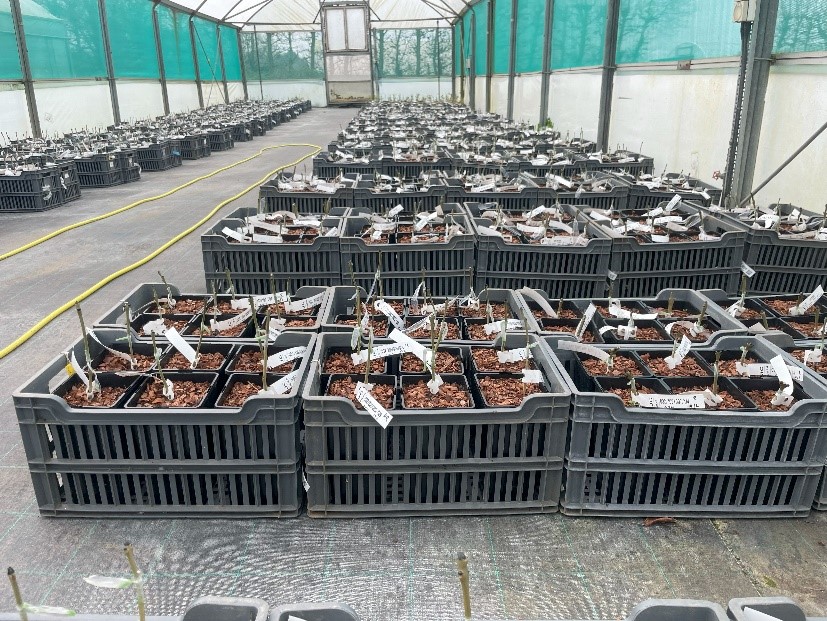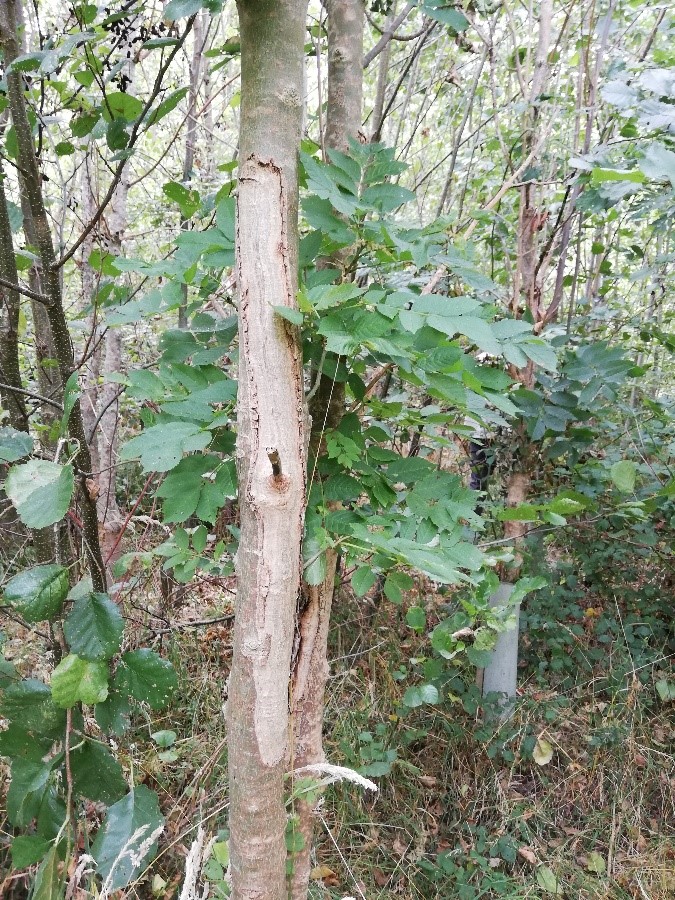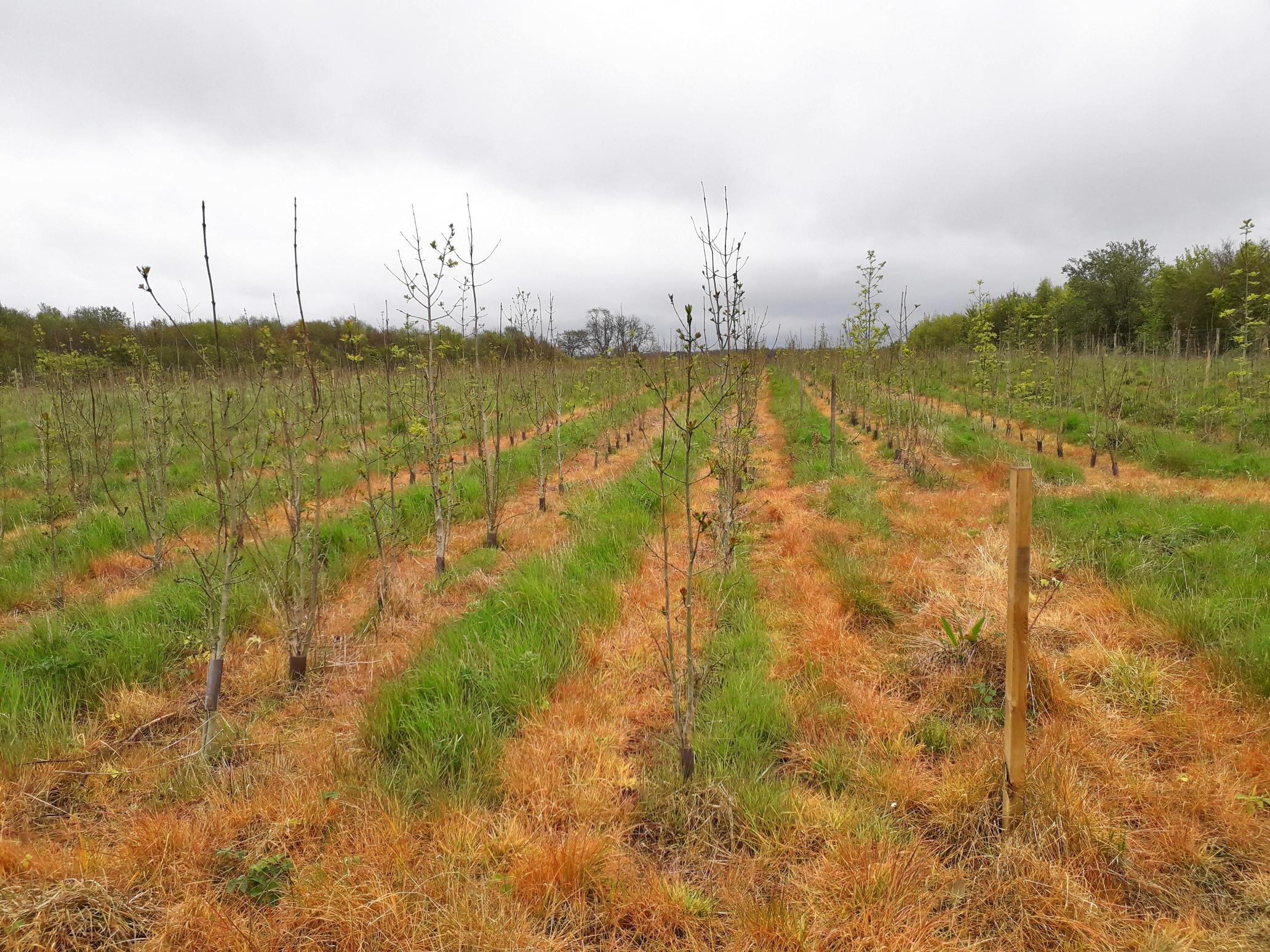An update by Jo Clark, Head of Research at Future Trees Trust
The Living Ash Project (LAP) was established in 2013 to identify healthy ash trees within ash dieback diseased woodlands across Britain. By grafting these resilient trees and studying their tolerance, the goal is to restore ash as a thriving broadleaved species in the future. The first phase of the project culminated in 2018 with the identification of just under a thousand trees identified with tolerance to ash dieback. The trees were grafted and planted out on the public forest estate in 2019 as the National Archive of Tolerant Ash.

The government’s Chief Plant Health Officer, Nicola Spence, accompanied by Forest Research’s Chris Reynolds, and Head of Future Trees Trust Jo Clark planting at the Ash Archive in 2019.
The second phase of the Living Ash Project: Securing Tolerant Material for Seed Production Purposes, also run for five years, with 2023 being the last full year of the project, and as such was very busy. This has been a large, cross agency research project with several dedicated partners. Forest Research assessed six mass screening trials established in 2013, and the three progeny trials established in 2016 as part of LAP1. Future Trees Trust also assessed many research trials that constituted our breeding programme before the arrival of Hymenoscyphus fraxineus, and we also visited all the estates GB wide where we selected our original ash plus trees in the 1990s. We identified a further 790 trees during with tolerance to ash dieback during 2023 and grafted over 5,000 ramets for inclusion in the National Archive in Hampshire in January 2024, including additional grafts for a second archive to be located in Scotland.

Selecting healthy ash trees in Norfolk, summer 2023, from an ash woodland devastated by ash dieback.

Newly grafted tolerant ash trees at Niab-East Malling Research in Kent
Testing Tolerance Selections
Forest Research also completed work on controlled inoculations to test our tolerance selections via two methods: one was direct inoculation through infected wood inserted in to the main stem of young grafted clones, and the second method was through a spore suspension placed on leaves, a more natural infection mechanism. Both inoculations worked, with clones being identified as tolerant and susceptible performing as expected. In addition to this, they tried to isolate the fungus (Hymenoscyphus fraxineus) from wood samples taken from trees with healed lesions, and were unable to detect the pathogen, an indication that the tree is somehow combating the disease. These trees are of particular interest to the project as we know they have come in to contact with ash dieback, but are not only surviving, they are growing well and putting on increment.
While grafting tolerant trees works well, it is more desirable to have this valuable material on its own roots, as infection could occur through the rootstock. Royal Botanic Gardens, Kew tried various different cutting techniques (timing of taking cuttings, hormone treatment, age of material) but were unable to get cuttings to root except in the very youngest of seedlings (1 – 2 years old). Therefore, we grafted our tolerant selections again. Cracking this one would be a great leap forward, but propagating ash reliably from cuttings remains elusive, as it does for oak too.
We will also be testing these selections through liquid chromatography mass spectroscopy which can identify individual chemicals that are associated with tolerance. Fera will be undertaking this work during summer 2024.

Impressive healed lesion on an ash tree in a provenance trial, with a green canopy above.


It’s great to see some success in the pursuit to save the UK’s iconic Ash -fingers crossed for more successful “breeding” methods 👍
Our ash trees are dying from this fungus. Can we arrange for grafting ?
Our property is a historic site and therefore we cannot plant new trees.